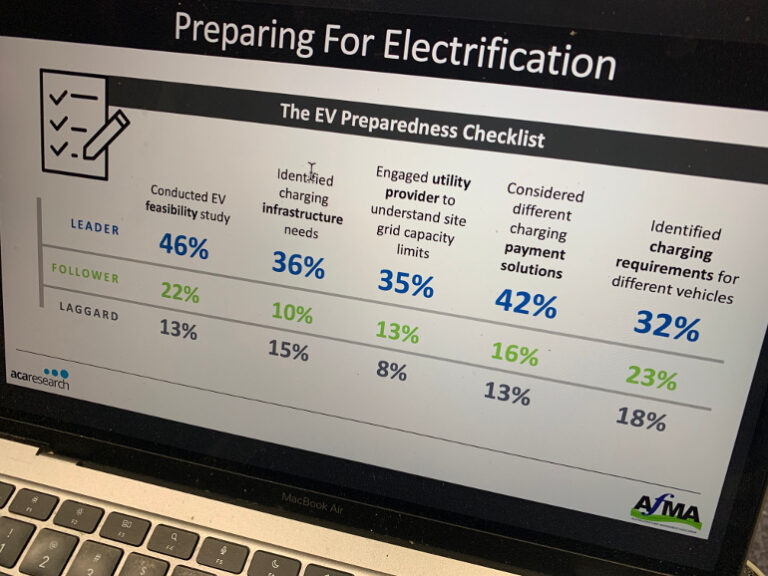Steve Nuttall, director at ACA Research, got the wake-up gig, to entertain the breakfast meeting on the morning after the Australasian Fleet Managers Association dinner which had capped off the first day of the biggest ever fleet conference and exhibition for the association.
Plenty showed up for it. And with talk about grid grab, rapid electrification and leaders versus laggards it was a wake up.
Nuttall talked about the challenge for the electricity grid. If everyone tried to electrify now there wouldn’t be enough to go around. A grid gab is a bit like a land grab, or anything where those who are prepared and in the know take the opportunity to get what’s in short supply.
In this case it’s fleet managers who are the leaders who are getting in now to guarantee they can get the electricity capacity they envisage needing as they transition their fleets to electric.
“The infrastructure component to this in terms of preparedness is the most important thing,” said Nuttall, talking about determining electricity demand and availability for chargers. “It’s more important than being able to try to obtain electric vehicles at the moment from a relatively short global supply. Get yourself ready and that’s what the leaders are doing and that’s the key lesson we can learn.”
Nuttall was citing results from a survey of some 200 Australian fleets. As he said he likes to focus on what the most innovative fleets are doing, or those he calls the leaders. They’re the ones digitising their fleets and using data to make decisions and transform practices for safer and more cost efficient and productive outcomes.
“I find that a really interesting segment to focus on when we’re trying to figure out what’s driving change because to me, they are leaders from from the perspective of transforming their fleet,” said Nuttall. “A digitised fleet makes a significant difference in terms of your ability to make smarter decisions. So I do a lot of work in the tech space.”
Leaders were the ones investigating bi-directional vehicle to grid technology more so than other respondents categorised as followers or laggards.
He said some 50 percent of the so-called leader fleets are using automatic crash notification systems and other safety technologies such as driver fatigue monitoring. The technology that those leaders are investing in is helping them to achieve their business goals, including safer drivers and safety of drivers, said Nuttall.
Electrification of fleets was all the buzz at the conference and exhibition.
“I’m really kind of impressed at the speed of progress that is being made in Australia,” said Nuttall. “We’ve gone from pipe dreams around electrification to real tangible examples.”
Nuttall commented on how many exhibitors were featuring something to do with helping fleets prepare for electrification. “This is the first time we’ve had a conference where it’s all happening.”
The takeaway is to follow the leaders if you are not a leader yourself.
“Leaders are focusing on digital transformation,” said Nuttall. “They’re doing that because they’re also focused on getting more bang for buck, they’re under considerable pressure in terms of their budgets, significant issues around vehicle and driver safety that they’re seeking to manage. They’re also preparing for the impact of change as well of electrification. They’re more conscious of drivers around economic factors, social factors, and environmental factors, all three of which are driving change in their fleets. Technology is a really key enabler for them.”






